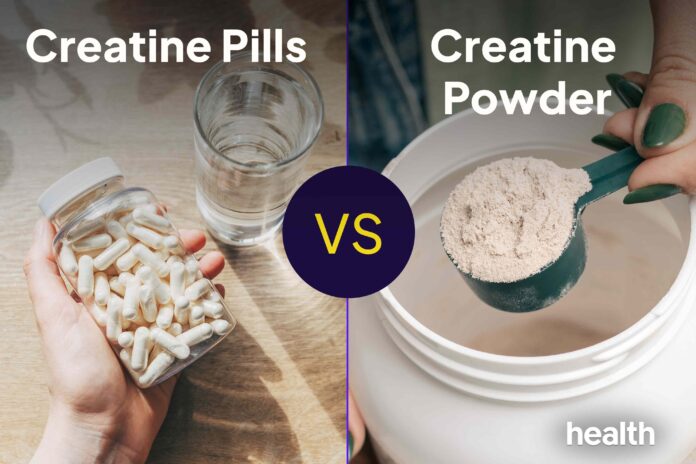Creatine supplements are a popular choice for athletes and fitness enthusiasts looking to boost muscle growth and performance. But with options like pills and powder available, choosing the right form can feel confusing.
This isn’t just about convenience; how creatine is delivered impacts its absorption and effectiveness. Both forms offer the same fundamental benefits — increased strength, improved high-intensity exercise capacity, and potentially faster recovery — but their delivery methods differ. Understanding these differences will help you make an informed decision that aligns with your goals and lifestyle.
The Chemistry Behind the Forms: What’s Really Inside?
At their core, both creatine pills and powder primarily contain creatine monohydrate. This is the form most backed by scientific research for its effectiveness and safety. Other forms like ethyl ester or nitrate exist but haven’t shown the same benefits or have potential downsides.
The key distinction lies in how that creatine monohydrate is packaged. Powder comes as a fine, easily dissolvable substance, while pills compress it into tablets or encapsulate it within capsules.
While most brands focus on pure creatine monohydrate, be sure to read labels carefully. Pills might include additional ingredients for stability, color, flavoring, or binding agents. These are generally safe but could be problematic if you have allergies or dietary restrictions.
Absorption: Powder vs. Pill
The way your body absorbs a substance impacts how quickly it starts working. Creatine powder excels in this area. Dissolving it in water or a beverage allows for rapid absorption because the liquid directly interacts with the creatine molecules.
Pills, on the other hand, need to be broken down by stomach acids before the creatine is released and absorbed. This process takes longer, meaning you might experience delayed effects compared to powder.
The upside of slower absorption with pills? Reduced risk of digestive discomfort like bloating, diarrhea, or nausea that some people experience with rapid creatine influx from powder.
Lifestyle Considerations: Convenience vs. Control
Powder:
- Pros: Versatility; easily mix it into pre-workout shakes, juices, or even yogurt. Larger containers often offer better value for money.
- Cons: Requires mixing, might not be ideal for travel, and the taste can be unappealing to some.
Pills:
- Pros: “Grab-and-go” simplicity, pre-portioned doses eliminate measuring hassle. Excellent for those on the move or who dislike the taste of powder.
- Cons: Less flexible dosing; you’re limited to the amount per pill and may need to swallow multiple pills if aiming for a higher dose. Generally more expensive than powder per gram of creatine.
Which Creatine Form is Right For You?
The “best” choice boils down to your individual preferences, lifestyle, and budget.
- Powder: If cost-effectiveness and precise dosing control are paramount, powder is often the winner.
- Pills: Prioritize convenience, ease of transport, or if digestive sensitivities make you wary of powder, pills offer a more manageable solution.
Important Note: Regardless of your choice, always consult with a doctor or registered dietitian before starting any new supplement regimen. They can help determine the appropriate dosage and address potential interactions with existing medications or health conditions




















